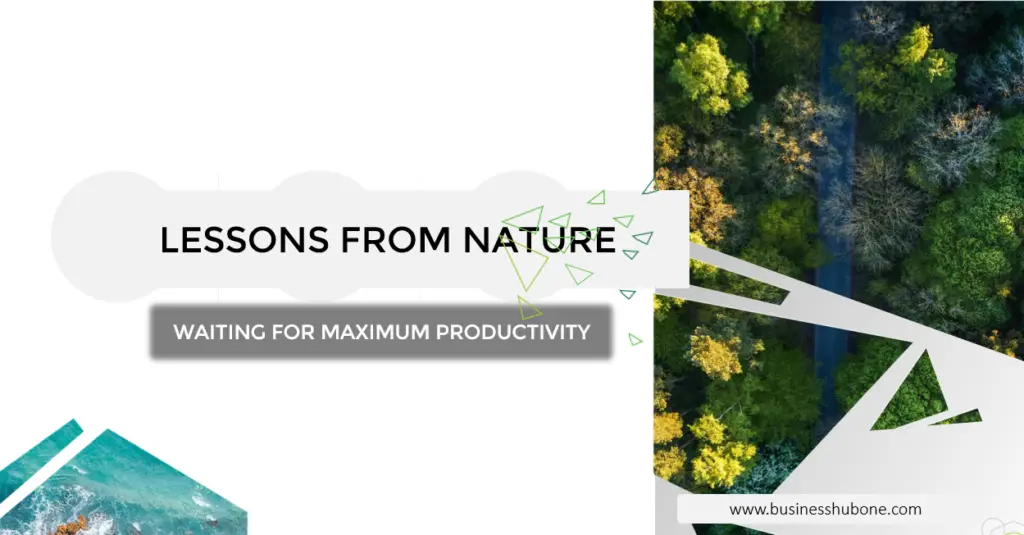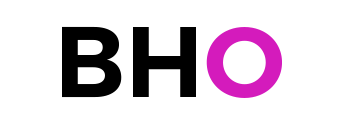Business Lessons From Nature: Waiting For Maximum Productivity
Productivity is a concept that almost everybody is familiar with in one way or another. However, there can be nuances that affect its extent. Startups and businesses need to understand these factors which can boost or limit the productivity of their enterprises.
This is a sequel to the post on delaying gratification, in this lesson, I will be examining the topic waiting for maximum productivity. First, a proper definition of productivity and maximum productivity, then how productivity works in nature, before finally relating it all to businesses/startups.
Table of Contents
What is Productivity?
Productivity according to dictionary.com is the quality, state, or fact of being able to generate, create, enhance, or bring forth goods and services. It can also be defined as the rate at which goods and services having exchange value are brought forth or produced.
In essence, it is the measure of output that comes from units of input. It is a measure of efficiency.
Productivity is the measure of output that comes from units of input.
Business Lessons From Nature: Waiting For Maximum Productivity #Productivity #BusinessHubOne
Productivity is the life-blood of every business. Every business strives towards maximizing output from each unit of input. The input can be monetary- investments, or raw materials depending on what type of business is involved. The more productive a business is, the easier it is to become and remain profitable. Business profitability is crucial to business survival, and since it is dependent on productivity, any business that hopes to thrive cannot ignore it.
Related: Start.up.die: Thoughts on startup failure
What is Maximum Productivity?
Maximum productivity is simply getting the most possible output from units of input. This is what every business/business owner works towards. This is because achieving maximal efficiency/output equals maximizing profits at no extra cost to the consumer. This situation counts as a win for everybody. The investors get the best returns on their investment, while the consumers also get the best value for their money.

Maximum Productivity in Nature?
The concept of getting the maximum output for units of input is very evident in nature – most especially plants.
Plants have varying lifespans and are so classified as annual, biennial, or perennial crops. An annual crop grows and fruits – completes its full cycle within the space of a year for biennial crops, it is twp years, while perennials may live for more than 20 years. the thing to note is that for annual crops the plant does not take long to fruit and to die. But for perennials, the plant takes longer to fruit usually between 2 and 3 years, and can then continue to fruit for 20 years.
A popular example is a cocoa tree. Normally, cocoa takes about 3-4 years to fruit and an extra year before the plant reaches its full potential, after which it continues to fruit for 25 years. This presents a particular advantage in that you have to till, and perform all the initial processes once, and continue to reap fruits by just maintaining the plant^/farm. For annual crops, the grinding continues, year in year out. This results in perennial crops giving the best output for units of input.
In another light, the advents of man in cultivation practices have increased the productivity of any plant that is cultivated. Some of the different methods used for improving the productivity of cultivated crops are as follows:
- Use of Fertilizers
- Preventing parasites and insect infestation through the use of Insecticides
Startups and Maximum Productivity
Every business or startup has to go through the initial stages of kicking off, and growing before the founders/investors can make a significant profit on their investment. in talking about maximum productivity in this post, the emphasis is on productivity on the amount of money invested, and not on the production line per se. Using the money invested gives a more holistic view of the whole business operation as it encapsulates all business spending, which is the main criteria when assessing profitability.
Maximizing the productivity of a startup can be achieved by optimizing different sections of the flow.
Optimizing Output
Economy of Scale
Economy of scale refers to the cost advantage of increasing output and in turn efficiency. The bigger your production, the cheaper it gets. This is the same principle that makes wholesale shopping cheaper as opposed to retail shopping. When you buy/produce in bulk, it effectively costs less per unit, than when yo do so at a smaller scale.
Other methods of maximizing productivity, include backward and forward integration.
Backward integration involves taking up activities up the supply chain to optimize the process.
Forward integration is the opposite, going down the supply chain.
Optimizing the workforce:
More workers are not equal to more productivity, ask Caya he’ll give the rundown.

In essence, every business should strive to optimize their processes, from customer acquisition (marketing) to product development/maintenance. This results in a maximized productivity and better profit margins giving the startup a better shot a survival.
Waiting for Maximum Productivity
On many occasions, there is a need to put off registering profits – paying out dividends and stuff, in order to maximize productivity. Delaying gratification for growth offers multiple benefits and one such is the ability to reinvest and optimize the profit-making processes before cashing out. You can read more about delayed gratification here.
Benefits of Waiting for Maximum Productivity
Reduction of losses caused by inefficiencies
In building products or offering services, it is necessary that you have a finished and
Disadvantages of hurrying
- Unnecessary costs
- Losing money that otherwise would have been made – as a result of inefficiencies
Related: Business Lessons from Nature: Delaying Gratification
Case Studies
Amazon
Amazon prioritizing growth and customer service over profits.
The letters to shareholders of amazon was analyzed to see just how customer-centric Amazon has been over the years by counting the number of times that the word “customer” was used in each shareholder letter. It was found that the word “customer” was, in fact, the most commonly used word across all the letters, followed by “Amazon,” “new,” and “business.”

Amazon has since grown to become the world’s largest online retailer.
Jeff Bezos on growth
We are stubborn on vision. We are flexible on details…. We don’t give up on things easily. Our third-party seller business is an example of that. It took us three tries to get the third-party seller business to work. We didn’t give up.”
Jeff Bezos
Advice
If you’re not stubborn, you’ll give up on experiments too soon. And if you’re not flexible, you’ll pound your head against the wall and you won’t see a different solution to a problem you’re trying to solve.
Final words…
Maximizing profitability is more at no extra cost.
It is getting more out of that which is already being done.
Feel free to drop comments








One Comment
Comments are closed.